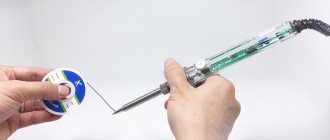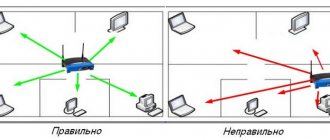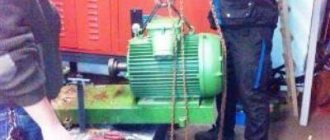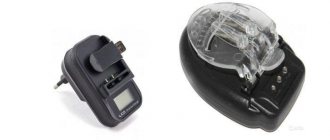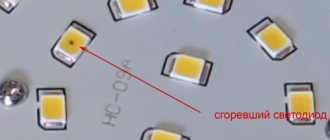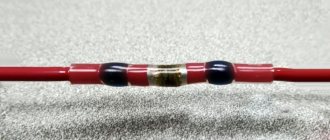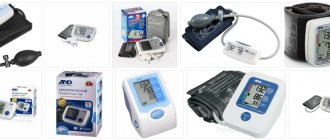Why doesn't the hood work?
Even a new hood may not work in the kitchen, let alone the one you’ve had for a long time. In this case, it is not necessary to immediately call the specialist. You can try to find the problem where the device does not respond to commands and fix it yourself.
Typically, the cause may be:
User errors
- Firstly, be sure to regularly change or clean the filter. If it is mesh, clean it 3 times a week. Change the carbon filter once every 6 months or according to the message on the panel that appears in the latest models for your convenience.
- Secondly, you cannot run the hood if there is nothing on the hob. Overheating will have a bad effect on the system, after which it will need to be repaired.
- Thirdly, the hood must be turned on in advance, about 3 minutes before cooking. And turn it off 20 minutes after you have prepared everything. Otherwise, the fan does not perform its function, and odors fly around the kitchen.
Lost contacts
If you have noticed, when the hood is turned on, it vibrates a little, which can cause the contact on the block or higher up the chains to break. For this reason, the kitchen hood rarely works, but it is worth taking this into account when diagnosing.
Violation of installation rules
If installed with flaws, the hood may fail over time due to a poor connection of the wires or due to a broken corrugation.
Electrical wiring problems
When wondering why the hood is not working, check the socket, switch on the panel, etc.
Engine failure
The hood is driven by an asynchronous motor. If it hums but does not start, the cause of the hood not turning on may be a blown ceramic winding fuse. It is located directly in the motor housing, so it is quite difficult to get to it: you need to disassemble the hood, get to the motor and check the windings. It is necessary to ring at least two windings: one of them is working, and the other is starting.
If the hood operates at a large number of speeds, then there can be many more windings. If everything is fine with the fuse, you need to check the capacitor, which is responsible for turning on the electric motor. A multimeter is used to test the capacitor, but if the capacitor is swollen, then there is no point in testing it.
The electric motor often fails due to overheating . The motor inside the hood needs high-quality cooling, but if the filters are clogged with fatty deposits, then it does not receive the required amount of air and overheats, so it may fail.
Increased noise of the hood - how to deal with it?
The motor may also fail due to a short interturn circuit in its windings. In this case, it will be impossible to repair it, much less on your own. Therefore, you will have to buy a new motor of the appropriate type and install it in place of the burnt one.
Primary diagnosis
Often the hood does not work due to problems with the electrical wiring, so we check it first. But if you don’t understand anything about electrics, it’s better to call a specialist.
So, when the hood at home does not work, you need to make sure that everything is in order with the outlet. If other equipment is turned on from the same outlet, the wire or contacts in the device itself may be damaged. Check the wire and plug for damage. And inspect the contacts.
Everything is fine? Then we next look at the switch through which voltage is supplied. Ring the wire, conductors and switch. If it does not work in the “On” position on the switch, then that means the reason is there.
To accurately check that there are no contacts in the switches, you need to connect the conductors without it and plug the device into the network. Happened? Therefore, the switch needs to be repaired or replaced.
The cause of a hood breakdown may be due to the protection elements installed in the device. You need to see the fuses; it happens that over time they burn out and must be replaced.
Next we will tell you how to fix other breakdowns if no problems are found with the wires.
Breakdowns of the treatment plant and methods for correcting them
Almost all pumping station breakdowns are manifested by an increase in the level of wastewater in the receiving compartment. A rise in the level activates an emergency float, which triggers an alarm - a bell or a light signal. This alerts the user to the danger of flooding the system and releasing untreated wastewater outside the unit.
Flooding of sewage treatment plant
First of all, you need to check whether the drainage channel for purified waste from the device is clogged or frozen. If not, then you need to look for the cause of the station’s flooding based on the type of equipment. It can be with a gravity drainage system or with forced pumping.
In models with forced pumping, the problem may be a broken drain pump or a stuck float switch. To check the operation of the pump, remove it and connect it to another outlet. If the pump is in order, but does not turn on after connecting to the station, then most likely the problem is with the float switch - it needs to be replaced.
The following problems may be common to gravity and forced models. Check whether liquid is pumped from the receiving compartment to the aeration tank. If not, then the culprit is a faulty airlift. The reasons for the breakdown may be the following:
- the airlift tube is damaged;
- the airlift of the main pump is clogged;
- the float switch is faulty;
- The compressor membrane that supplies air to the airlift is damaged.
Breakdowns are eliminated by replacing damaged elements or cleaning clogged areas.
RCD tripping and problems with power supply
If, when starting the station, an RCD (residual current device) is triggered, the reason may lie in damage to the compressor or drain pump, or float switch. It is also necessary to check the electrical wiring and sockets.
Disturbances in the operation of the installation can also be caused by a prolonged power outage, and then there is a possibility of overflowing of the tanks and the occurrence of an unpleasant odor due to the onset of the development of anaerobic microorganisms. If the voltage drops in the network are within 3% of the nominal value, it is necessary to install a stabilizer.
Changing the water level in an idle station
It is not advisable to leave the TOPAS cleaning system idle for a long time. But if this does happen, and it is discovered that the water level in the tank is changing, then possible malfunctions may be the following:
- Failure of plumbing fixtures leading to water leakage. You need to find the source of the leaks and repair or replace them.
- The device casing is damaged. If the problems are minor, then you can try to solder the case; if not, you need to contact professionals for help, and they will replace the damaged area. And it’s good if you can get by with repairs, because replacing the entire body will not be cheap.
- Improper installation and, as a result, flooding with rain or flood water.
- The station tank must be installed so that the lid rises 15 cm above the ground surface.
A problem can also be a poorly organized exit of purified water from the system. The situation of poor outflow can be aggravated by poor soil throughput.
How to fix a hood light?
Users often use hood lighting as an additional option. It's really convenient, and the LEDs provide good lighting.
If the light in the hood breaks, the procedure is as follows:
- Screw the light bulb into another fixture. Perhaps it has served its purpose and needs to be replaced.
- Turn on the fan to see if the system works at all. Works? Let's move on to point 3.
- Check the quality of the voltage in the sockets with an indicator screwdriver. Also check to see if the shield has been knocked out. If there are no faults, then inspect the cord, ring the backlight switch and other circuit elements. So, you will find a weak point, but usually the cause is a burnt out light bulb or a broken socket.
No light when working
Many housewives turn on the hood lighting to illuminate the work area, as this is a more economical and rational approach, and there is no need to install additional lighting devices. If the lights stop turning on and the kitchen hood is faulty, repairs are carried out in the following ways:
Checking the light bulb (with frequent use it could simply burn out).
Check the operation of the exhaust fan.
The cause may be insufficient voltage. It can be checked with an indicator screwdriver.
How to fix the hood speed switch?
Here, the reason why the hood does not work is clear - the button in the control unit is broken.
What do we have to do:
- Remove the cover and inspect the button, the contact may have burned out.
- Check the tracks on the board.
- Ring the chain.
- And inspect the starting capacitor, it can also burn out over time. And then it must be replaced.
How to eliminate weak cravings?
Another well-known breakdown is why the hood doesn’t work, it doesn’t pull. What to do?
We are looking for the reason in filters that have not been cleaned or changed for a long time. And in a mesh that collects fat. If it is a filter, clean it or change it, depending on the type and period of use.
Poor draft also happens because a vacuum has formed in the room, since all the windows have been closed. Then the hood sucks in air poorly or stops doing so altogether. Just ventilate.
And there may be no draft in the home ventilation duct. Bring a lighter with an open flame to the ventilation. If the flame does not stretch towards the channel, forced ventilation is needed.
Complete set of hoods
The hood is actually a centrifugal fan, the functionality of which is based on a conventional asynchronous motor. The rotation speed of this single-phase electric motor is continuously controlled by different methods. Exhaust devices operate on the following principle: a fan inside a metal casing passes through filter elements and removes steam, soot and odors during cooking to the outside.
Hood details:
- centrifugal exhaust fan;
- exhaust ventilation grilles;
- switches and switches;
- filters and grease traps;
- air intake grille;
- regulators;
- lighting lamps.
The rotation speed of the hood fan may vary. The exhaust air mass enters the grease filter. If the device operates as a flow type, the air goes outside through a vent or shaft. If the device only filters the air, then it falls on a carbon filter that absorbs odors and is returned back into the room.
Centrifugal fan - the “heart” of the hood
Carbon filters are often installed immediately after the grease trap and secured to metal brackets. They are disposable, they are changed depending on the contamination and intensity of the hood. During cooking, fatty impurities accumulate on metal grease traps made of aluminum, so they are regularly washed and cleaned of grease and dirt. You can wash the hood grate with warm water and baking soda.
The control panel can be push-button, slider or touch. Both mechanical and electronic panels are carried out by one kitchen hood control unit. Exhaust devices are equipped with lighting devices (incandescent, halogen or LED lamps).
How to fix an exhaust fan?
It must be said right away that the hood in the kitchen may be humming not because the fan in it is broken. Some models are not pleased with the build quality; as a result, a hum can be heard even at minimum speed. Therefore, it is important to choose the device wisely when purchasing.
If you are sure that the noise is acquired, check the fastening. Even if there is a small distance between equipment and furniture, there are vibrations that can be heard as noise. Tighten the fasteners or place a piece of foam rubber in the gap.
But when the engine is noisy, and nothing else, the fuse has probably blown out - buy a new one.
Information selection
All kitchen hood malfunctions and their elimination. A detailed description of the hood is provided. Exhaust device. Principle of operation. All kinds of malfunctions of kitchen hoods Eurosoba, Gorenje, Renova, Vestel, Kaiser, Pyramida are considered. Cata, Best, Turbo, Universo, Best, Siemens, Elika, Whirlpool. The malfunctions, their causes and the main detailed and step-by-step instructions for disassembly, fault detection, repair and subsequent assembly are described. You will receive answers to all categories of questions as well as invaluable guidance on how to fix any kitchen hood malfunction yourself, quickly and efficiently at home
What to do if the hood does not work completely?
What to do if the hood in the kitchen is completely broken and won’t turn on? It's difficult to repair without a technician. You will see that nothing is working: the fan is standing still, there is no light, and so on .
First, check the wiring again. Is everything okay with the cord, or is it broken, is the socket working, etc. If the reasons cannot be found, we call back the entire chain.
You need to check the switch especially carefully for burnt contacts. And look at the condition of the fuse, as well as the capacitor, so that it is not swollen .
You have checked everything, there are no faults, the engine is probably broken. As a rule, it is expensive to repair and it is easier to purchase a new one.
Replacing the engine yourself:
- Unplug the hood.
- Pull out the filters.
- Open the bottom panel.
- Turn off the backlight.
- Remove the hood from its niche.
- Disconnect the fan from the motor, usually by removing the clamp.
- Remove the electric motor. You need to unscrew the screw, disconnecting the green ground wire, and then cut the wires from the engine.
- Unscrew the fasteners and remove the engine.
- Attach the new motor to the mounting plate and place it inside the device. Don't forget to connect the motor, including grounding.
- Reinstall the fan, securing the clamp.
- Hang the hood on the bracket, connect it to the network and check the operation.
History and design of the hood
Since the beginning of ancient times, people have thought about ventilating indoor spaces. This was especially true in food preparation areas. Initially, all actions were reduced to simple ventilation or such an arrangement of the cooking area that naturally removed combustion products.
With the development of house building, kitchens also changed. They began to use stoves and fireplaces in which chimneys were used to remove combustion products. In the 19th century, the Russian scientist E. H. Land suggested that high-quality ventilation is impossible without artificial air exchange. The production of hoods was mainly developed thanks to the Italian company Faber, which released the first plastic hood in 1958.
Modern hoods fully cope with the tasks assigned to them. Without losing performance, they have become compact and easy to use. Competition between companies leads to constant improvement of product technical characteristics, such as performance, noise reduction, and reliability.
Types and principle of operation
A kitchen hood is a device designed to clean the air from smoke, odors, particles of fat, and moisture that arise during the cooking process. Depending on the operating mode, kitchen hoods are either flow-through or circulation. The first type involves exhaust mode, when the exhaust air is drawn outside from the room, most often into the ventilation shaft. This mode is more preferable than the second. The circulation mode is based on passing air through a filter system and returning it back to the room.
According to their appearance, exhaust devices are divided into the following types:
Despite their appearance, their operating principle and structure are the same. The main part of a kitchen appliance is the motor. The quality of air purification depends on its operation and location. Having an exhaust fan, it ensures the creation of air flows passing through the filter elements.
An asynchronous motor is used as a motor. Its axis follows the movements of the pumped or discharged air flow. Such an electric motor consists of a rotor located inside the stator. The distance between them is no more than two millimeters. The stator is a core with slots on which the winding is wound. The rotor, the moving part with the shaft, consists of a core with a short-circuited winding. This design resembles a squirrel wheel in appearance.
When alternating current is supplied to the stator winding, according to the laws of physics, an alternating magnetic field appears. Electromagnetic induction occurs on a closed conductor placed inside this field, which leads to the appearance of a current, and this, in turn, causes the rotor to rotate. Due to the fact that the stator has several leads, connecting different numbers of them leads to a change in the fan rotation speed.
Structural elements of the system
A special element of the hood is the check valve. It can be electric, with a motor opening when starting, or mechanical, triggered by the pressure of the air flow. Its job is to pass air in one direction and prevent it from passing in the opposite direction. In addition to the electric motor for the hood and the valve, the device includes:
- frame;
- power unit;
- control board;
- control unit panel;
- motor holder housing;
- backlight lamps;
- filters.
The body itself is made of sheet steel and is powder coated to prevent rust. The power supply is designed to start the electric motor and provide the required voltage to the control board and backlight lamps. The motor holder is used to reduce the level of vibration and noise from its operation, as well as to securely fasten it. The filters have different designs, but in all cases a perforated aluminum mesh is used as the primary element. It effectively protects parts of the hood from contamination with grease. The control unit is made in the form of mechanical buttons or touch surfaces.
Tips for using home hoods
In order not to worry about how to repair the hood, you should follow simple rules:
- The hood should hang from the gas stove at a level of 80 cm and 70 cm from the electric hob. Otherwise, the device will become very hot and suffer damage. And if you hang it lower, the efficiency will suffer.
- When changing gears, it is better to start with a low speed so as not to put a sudden load on the engine.
- Do not start the appliance if the stove is empty, as the motor will also overheat.
- Change and clean filters. Otherwise, the engine becomes covered with grease, as well as the circuit board, lamps, and so on. This leads to overheating and breakdown.
- Install a protective relay to protect the device from power surges.
Expert advice
Masters recommend adhering to the following rules:
- It is necessary to regularly inspect the entire ventilation system and clean the hood.
- Any breakdowns are always easier to prevent than to fix. This will save effort and money on calling a technician and purchasing new equipment to replace the broken one. Therefore, you need to check the ventilation, its performance, clean the passages and change parts.
- A plastic spatula may be required for cleaning. They are very convenient to work with, but you need to very carefully clean the exhaust passages with them so as not to damage the grille.
Reference
You can repair the hood fan yourself if the blockage occurs within the walls of the room and not in the general air exchange system.
Simple disassembly of ventilation, cleaning channels from accumulated dirt or replacing faulty parts are the main points that can cause a malfunction in the air supply to the apartment.
A kitchen hood is a necessary attribute of comfort: it does a good job of removing odors generated during cooking. Minor damage that occurs during operation can be repaired with your own hands. How to repair a built-in hood with your own hands - read on our website.
